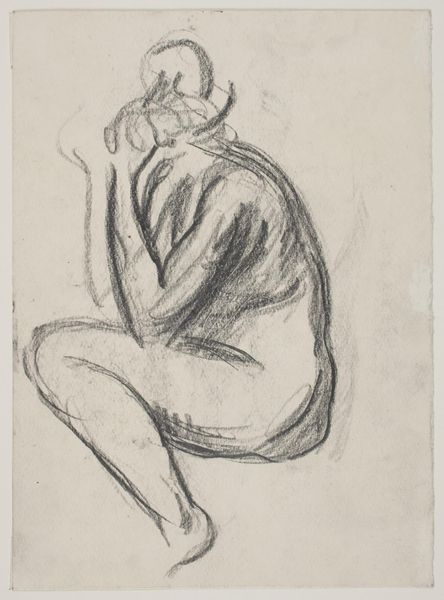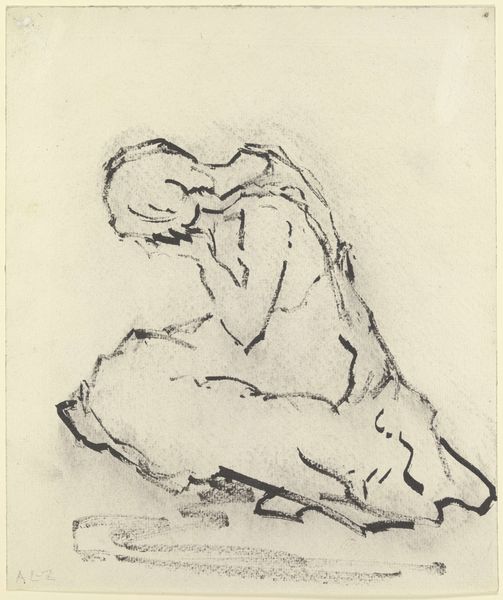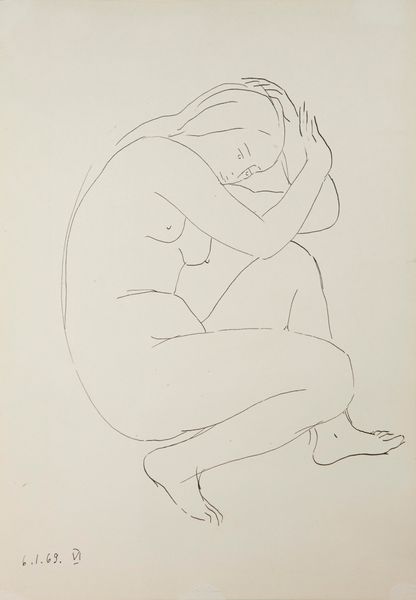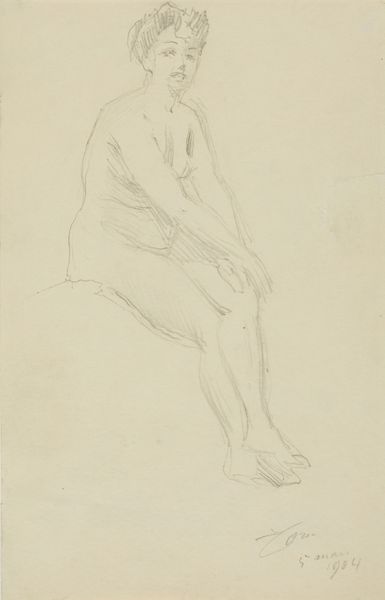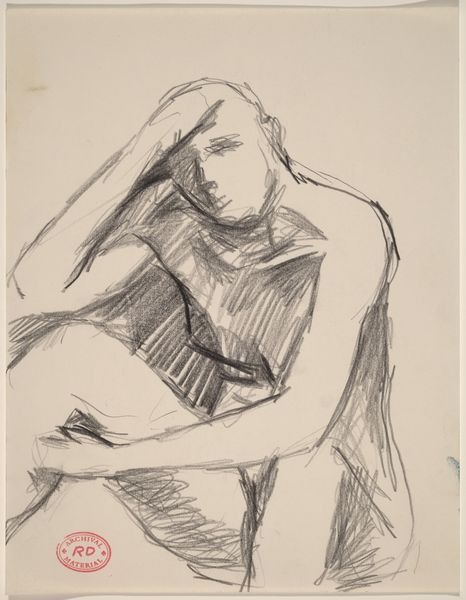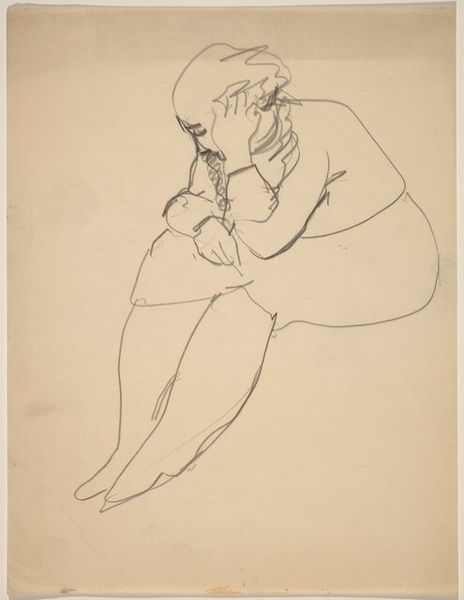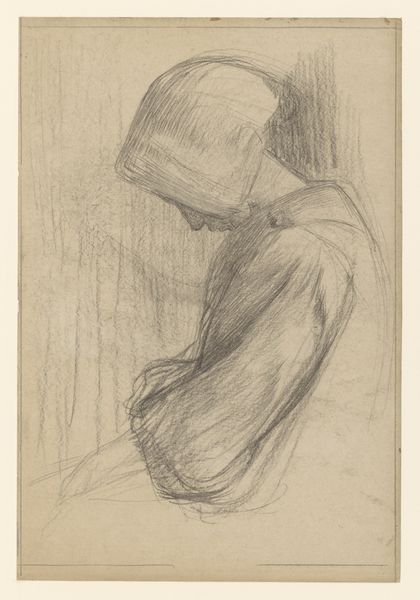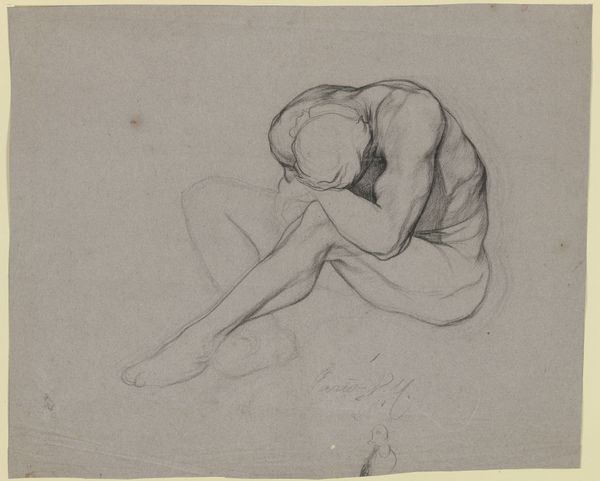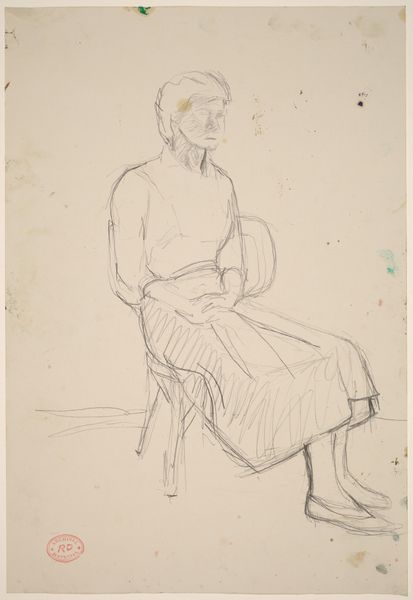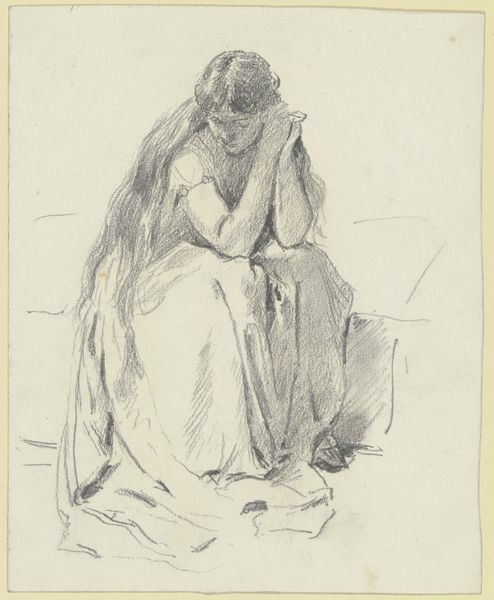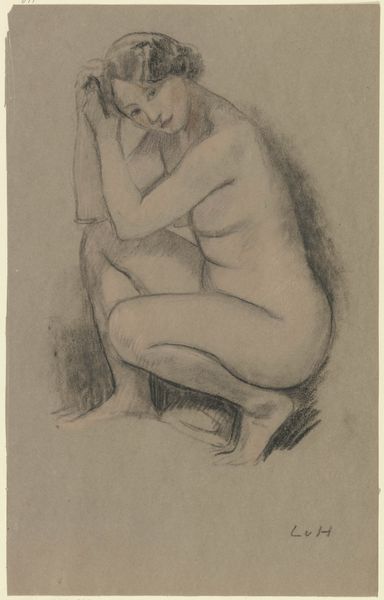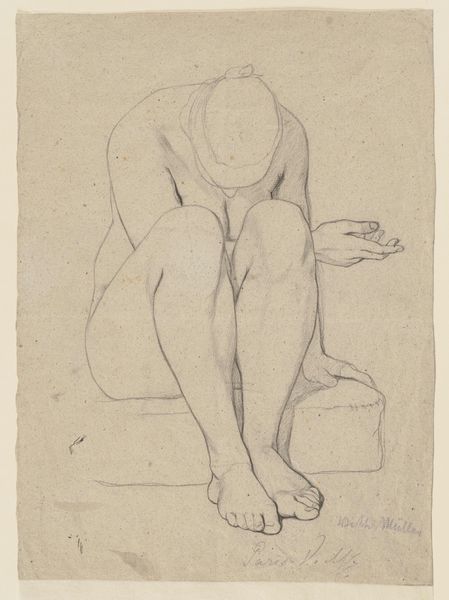
drawing, pencil
#
portrait
#
pencil drawn
#
drawing
#
figuration
#
pencil
#
academic-art
#
realism
#
monochrome
Curator: Here we have "Modelstudie. Siddende nøgen dreng," or "Study of a Seated Nude Boy," attributed to Christen Købke and thought to have been produced sometime between 1810 and 1848. It's a pencil drawing, currently held in the collection of the SMK, the National Gallery of Denmark. Editor: It's quite a melancholic piece. The pose, with the figure's head in his hand, slumped posture... It evokes a feeling of introspection or perhaps even sadness. Curator: The simplicity of the medium certainly contributes. The focus is directed entirely toward form and tonal variations to model volume, eschewing any potential distraction offered by color. It’s an interesting study in academic style, quite common at the time for artists honing their skills in depicting the human form. Editor: Academic certainly. It's a classic art-historical power dynamic at play: the male artist observing and representing the male nude, perpetuating the tradition of male gaze and dominance. What do we know about the social context that allowed an artist like Købke to study the nude boy as an object of observation? What safety net and protections were in place for the model? These concerns seem especially salient today. Curator: Those considerations absolutely deepen our engagement with it. From a purely formal standpoint, I’m struck by the efficiency and sureness of line. Observe the rendering of light and shadow; it suggests not just skillful observation but a true understanding of anatomy. The planes of the body are delicately described using minimal pencil strokes. The foreshortening is also quite sophisticated, particularly in the depiction of the legs. Editor: It is indeed well-executed. The rendering carries its own sort of subtle power and is indeed something to pause over when trying to see beyond only subjecthood, to consider material conditions. Curator: Precisely. So, even in a seemingly straightforward academic study, there's complexity that encourages critical observation and contextual analysis. Editor: A pencil, paper, the human form—it seems like such an exercise, but so much more exists between the artist, his historical period, and those who would come after.
Comments
No comments
Be the first to comment and join the conversation on the ultimate creative platform.
